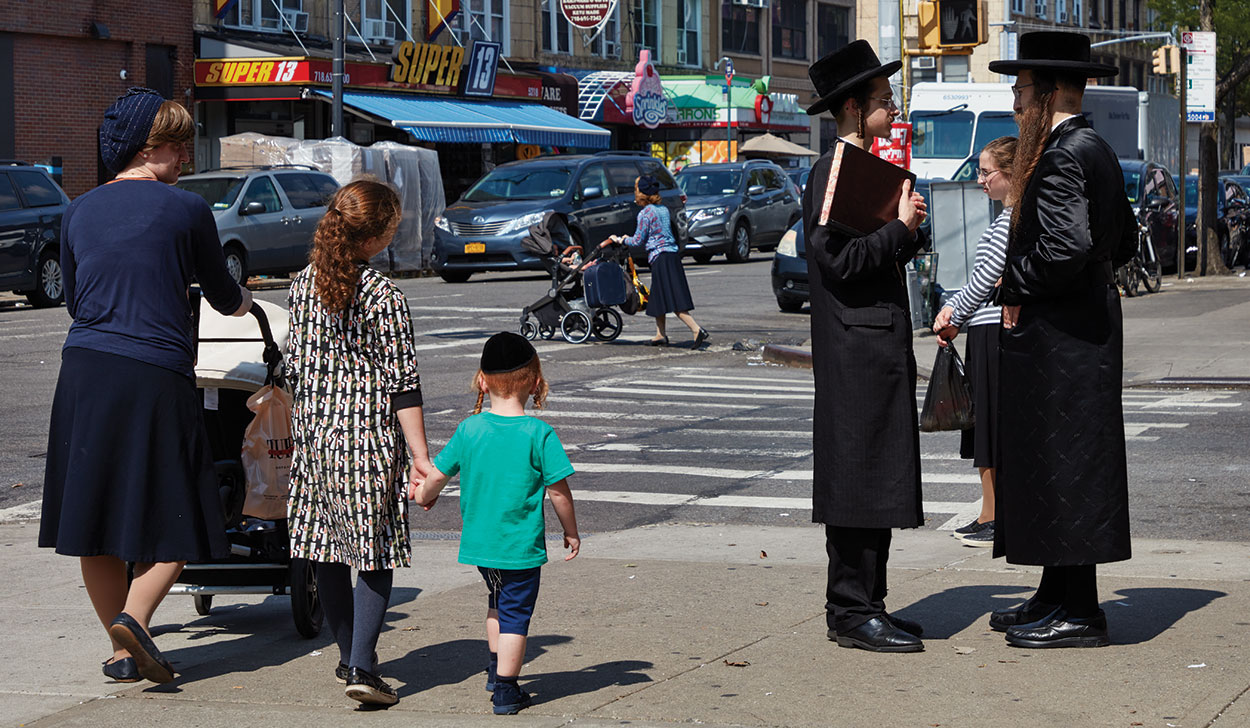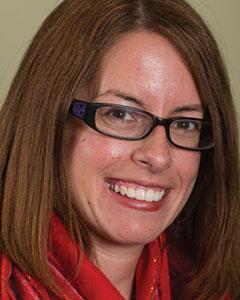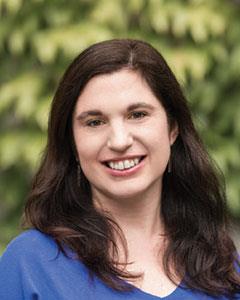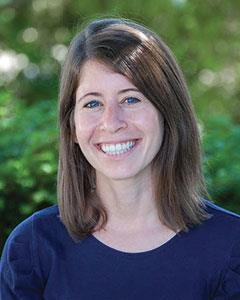Above: R.B. Kitaj. Eclipse of God (After the Uccello Panel Called Breaking Down the Jew's Door), 1997-2000. Oil and charcoal on canvas, 35 15/16 in. x 47 15/16 in. Purchase: Oscar and Regina Gruss Memorial and S. H. and Helen R. Scheuer Family Foundation Funds, 2000-71. Photo by Richard Goodbody, Inc. Photo Credit: The Jewish Museum, New York / Art Resource, NY. © 2020 R.B. Kitaj Estate
PEDAGOGY
Introduction Antisemitism—prejudice towards or hatred of Jews— is prevalent. Antisemitism can manifest overtly (e.g., swastikas in public spaces), or can occur as a result of other events occurring in a community. For example, Brooklyn recently faced a measles outbreak. Public officials highlighted low vaccination rates among the hasidic community. As a result, members of the community faced profiling and fear-mongering, reflecting antisemitic tropes of disease spreading.i
Context
Antisemitism has obvious costs to its victims, but also affects how public services are delivered and utilized. Jewish organizations have to spend more time and money on security measures, which directly impacts their mission-oriented work. Jews who may be trying to access government services may feel shut out or not welcome, and therefore cut off. In public administration classrooms, many of us integrate local and/or current events into our classes in order to show how the material we study has real-life applications. These types of discussions present opportunities to think about direct actions and reactions to blatant expressions of antisemitism. They also show how antisemitism can manifest in seemingly unrelated contexts, and can have unintended consequences on implementation and effectiveness.

Borough Park, Brooklyn, NY, 2018. Photo by Carol M. Highsmith. Library of Congress, Prints and Photographs Division.
Framing the Discussion
Regardless of the specific topic used as an entry point for talking about antisemitism in the classroom, every classroom conversation about antisemitism should begin with basic information about Jews. Jewish literacy—an understanding of Judaism, Jewish history, and the Jewish community—is a precondition for combating antisemitism. Students in Jewish Studies classes may already have this familiarity, but may need practice using these concepts in general conversations to general audiences. This discussion should also describe the basic tropes of antisemitism. These tropes traffic in dehumanization (Jews as rats or demons) and stereotypes (Jews as money-grubbing controllers of banks, government, and media). Antisemitism can also manifest in a moral inversion where Jews are perpetrators of hate and violence, not victims.
Balancing these demographics, Jewish literacy levels, and attitudes in our classrooms is challenging. Bringing the Self into these discussions can help amplify our message.
Depending on the geographic location and course subject, a public administration classroom likely includes Jews, non-Jews with Jewish family or friends, non-Jews with little exposure to Jews, and students who harbor antisemitic views. According to the Anti-Defamation League’s 2015 Global 100 survey, 10 percent of American adults have agreed with antisemitic statements. Balancing these demographics, Jewish literacy levels, and attitudes in our classrooms is challenging. Bringing the Self into these discussions can help amplify our message. Engaging in these discussions helps us meet a pedagogical charge set forth by Love, Gaynor, and Blessett of facilitating difficult conversations in our classrooms.ii
As Jews ourselves, we (the authors of this essay) have a unique opportunity to mix our personal experiences with more generalizable content.iii Non-Jews can also bring in the Self by talking about their own vulnerabilities (e.g., these conversations can be hard/outside of comfort zones), admitting mistakes they may have made in the past and/or how they have gone about familiarizing themselves with language that signals allyship.
In-class Assignments: Dissecting a Current Event using Policy Matrices
The steps informing policy matrices can contextualize an event.iv These steps are:
1 Define the problem
2 Assemble evidence
3 Construct alternatives
4 Select criteria
5 Project outcomes
6 Consider tradeoffs
For something that has already happened (e.g., fines levied for vaccine noncompliance), students can focus on the tradeoffs of such a policy, or reframe the problem to walk through all of the steps. For an incident that may lead to further policy actions, they can start with the problem definition itself. We use the examples of the measles outbreak to demonstrate the following these steps.
Definition: Public Health Emergency in New York City - declared by Mayor Bill de Blasio on April 9, 2019
Evidence: 285 cases confirmed in Brooklyn and Queens by April 2019
| Alternative 1: Fines for nonvaccination | Alternative 2: Quarantines | |
|---|---|---|
| Criteria 1: Efficiency | High - can be administered electronically | Low - raises administrative costs, necessitates human resources (cops, etc.) to be on the ground |
| Criteria 2: Technical feasibility | High | Low |
| Criteria 3: Equity | Low - appears high because it is applicable to all nonvaccinated people, but low because in reality it targets specific populations | Low |
| Projected Outcomes | increased vaccination rates | not necessarily higher vaccination rates, potentially perpetuates the health emergency |
| Trade-offs | likely to perpetuate stereotypes* | negative impact on economic standing, likely to perpetuate stereotypes* |
*only identifiable through a lens of cultural literacy
Without understanding the demographic makeup of Brooklyn, and specifically, Williamsburg, the policy alternative of fines appears logical. However, armed with some cultural literacy about Jewish geography and antisemitism, problems become clearer. Declaring an emergency in Williamsburg, without contextualizing the policy solution with cultural sensitivity, may incite connections to antisemitic tropes of Jews as disease carriers. One possible approach may be to frame communication in a way that does not highlight the Orthodox demographic (giving street names as boundaries rather than calling out Williamsburg). Jewish literacy can help public policy makers and administrators recommend and implement solutions that achieve desired health outcomes while also mitigating unintended consequences.
Closing Thoughts
Antisemitism deserves focus as its own issue. We dive into this in more detail in our own field’s journal for pedagogy.v Antisemitism also fits within a theme of Othering, which occurs when, as john a. powell explains, people winnow the definition of who counts as a full member of society. Islamophobia, sexism, racism, and homophobia are additional examples. In our context, Othering potentially cuts people off from the public services they need. The examples we present here are specific to antisemitism, but offer a lens through which we can help our students engage with many of these challenging topics.
Additional Resources
For Jewish population stats: American Jewish Population Project.vi
For curricula fostering Jewish literacy: Facing History and Ourselves.vii
On social construction: A. Schneider, and H. Ingram “Social Construction of Target Populations: Implications for Politics and Policy,” American Political Science Review 87, no. 2 (1993): 334–47.

JAMIE LEVINE DANIEL is assistant professor at Paul H. O’Neill School of Public and Environmental Affairs at Indiana University-Purdue University, Indianapolis. Her research focuses on the relationship between nonprofit resource acquisition and program service delivery, with particular interest on the relationship between earned revenue and mission.

RACHEL FYALL is assistant professor at the Evans School of Public Policy & Governance at the University of Washington. Her research focuses on the intersection of the nonprofit and public sectors, with particular interest in nonprofit advocacy and policy implementation.

JODI BENENSON is assistant professor in the School of Public Administration at the University of Nebraska Omaha. Her primary research interests include civic engagement, nonprofit organizations, social policy, and social equity.
Jamie Levine Daniel, Rachel Fyall, and Jodi Benenson’s recently co-authored article, “Talking about Antisemitism in MPA Classrooms and Beyond,” appears in the Journal of Public Affairs Education.